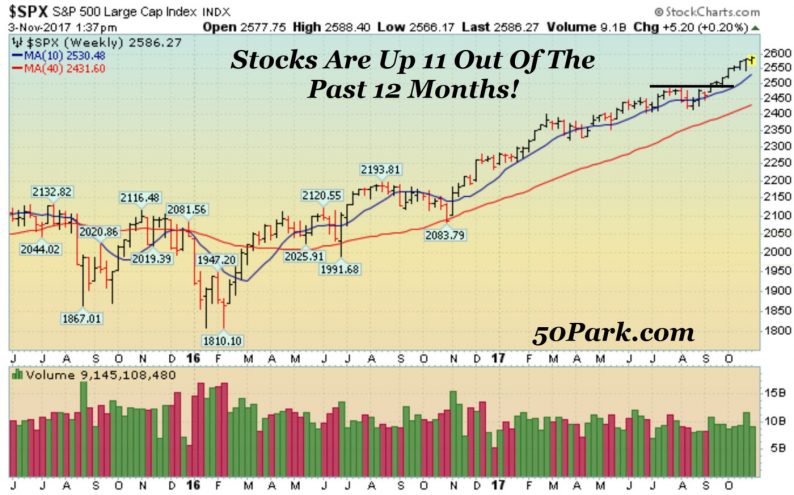
The market ended mostly higher last week as investors digested a slew of earnings, economic and central bank data. Nearly every major central bank in the world continues its easy money stance. Even though the Fed, and a few other central banks, began raising rates, rates are still extremely low and they are doing so at a very measured (a.k.a. slow) rate.
If the market or the economy deteriorates, one would expect global central banks to stop raising or actually lower rates (depending on how steep the market/economy declines). That phenomenon is also known as the central bank put. That has been the prevailing bullish logic since the financial crisis.
Economic data remains healthy. The market is now hoping for a big tax cut that will stimulate the economy. Earnings continue to come in above estimates and that is another net positive. Stepping back, I know the market is extended to the upside so I wouldn’t be surprised to see another near-term pullback unfold. Remember, eventually, this very strong bull market will end, but until it does, there is no point in fighting it.
A Closer Look at What Happened Last Week…
Mon-Wed Action:

Stocks fell on Monday after Robert Mueller indicted Paul Manafort and Manafort’s right-hand man. The charges against Mr. Manafort came from before he was the head of Trump’s campaign. But they are serious nonetheless. Stocks largely pulled back on Monday to digest Friday’s very strong rally.
Tuesday was the last day of October and the Dow & S&P 500 both enjoyed their seventh straight monthly gain. In fact, over the past year, the Dow & S&P 500 have been up 11 of the past 12 months. That is exceptionally strong.
On Wednesday, stocks were quiet as the Fed decided to hold off and raise rates later in the year. That was largely expected so it was a non-event.
Thur & Fri Action:
Stocks were relatively quiet on Thursday as investors continued to digest a slew of data. According to Reuters, earnings remain strong. So far, close to 75% of the companies that have reported earnings have beat estimates, while 67% have surpassed sales estimates.














Leave A Comment